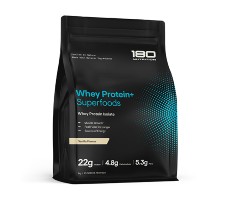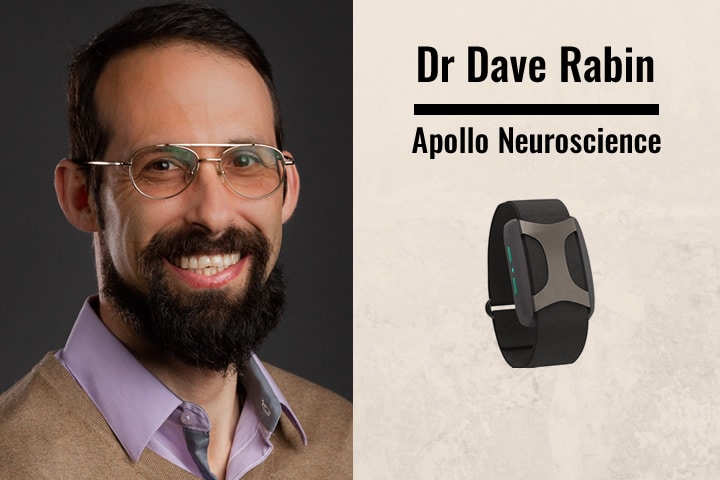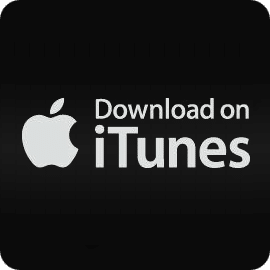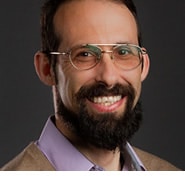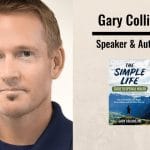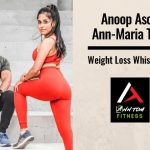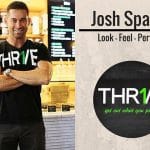Watch the full interview below or listen to the full episode on your iPhone HERE.
Stu: This week, I’m excited to welcome Dr. Dave Rabin to the show. Dr. Rabin is a board certified psychiatrist and neuroscientist who specializes in the treatment of chronic stress. He’s the co-founder of Apollo, a new wearable wellness device scientifically validated to lower stress. In this episode, we discuss how touch and vibration can positively impact HRV, that’s heart rate variability, and learn how the Apollo can adapt to enhance focus recovery and sleep. Over to Dr. Rabin…
Audio Version

- What is HRV and why should we pay attention to it? (18:39)
- How can touch and vibration help where stress is concerned? (08:06)
- What is the Apollo wearable and what led you to create it? (21:05)
Get More of Dr Dave Rabin
- https://apolloneuro.com/
- https://www.drdave.io/
- https://twitter.com/daverabin
- https://www.linkedin.com/in/drdavemdphd
If you enjoyed this, then we think you’ll enjoy these interviews:
- Dr Stan Rodski – The Neuroscience of Mindfulness
- Dr. Ritamarie Loscalzo – Overcoming Stress & Fatigue The Natural Way
- Damian Kristof: Blue Zones, Stress Reduction Strategies & Avoiding Nutritional ‘Scare’
Full Transcript
Stu
00:03 Hey, this is Stu from 180 Nutrition and welcome to another episode of the Health Sessions. It’s here that we connect with the world’s best experts in health, wellness, and human performance in an attempt to cut through the confusion around what it actually takes to achieve a long lasting health. Now, I’m sure that’s something that we all strive to have. I certainly do. Before we get into the show today, you might not know that we make products too. That’s right. We’re into whole food nutrition and have a range of superfoods and natural supplements to help support your day. If you are curious, want to find out more, just jump over to our website. That is 180nutrition.com.au and take a look. Okay. Back to the show. This week, I’m excited to welcome Dr. Dave Rabin to the show.
00:48 Dr. Rabin is a board certified psychiatrist and neuroscientist who specializes in the treatment of chronic stress. He’s the co-founder of Apollo, a new wearable wellness device scientifically validated to lower stress. In this episode, we discuss how touch and vibration can positively impact HRV, that’s heart rate variability, and learn how the Apollo can adapt to enhance focus recovery and sleep. Over to Dr. Rabin. Hey, guys. This is Stu from 180 Nutrition, and I’m delighted to welcome Dr. David Rabin to the podcast. Dr. Rabin, how are you?
Dave
01:29 Good, thanks. How are you, Stu? I really appreciate you having me.
Stu
01:32 I really appreciate you sharing some of your time. I know that we got lots to talk about this morning and there’s a particular device that we’re really intrigued in finding out a lot more about. Before we dial into that, and for all of our listeners that may not be familiar with you or your work, I’d love it if you could just tell us a little bit about yourself please.
Dave
01:53 Sure. I’m a psychiatrist and a neuroscientist. I see patients currently focused on treatment resistant, post-traumatic stress disorder, depression and anxiety, substance use disorders and chronic pain, insomnia, pretty much most mental health conditions that are worsened by stress and some of them that crossover even into physical health. That’s a lot of conditions and we see a lot of overlap between those conditions in people. I was working with those patients for a while and I realized that there were a lot of commonalities between these folks that prevent them from achieving their therapeutic goals from treatment. If you have anxiety or depression, your goal of treatment is to feel less anxious and feel happier during the day and have more energy and sleep better at night.
02:41 But less than 50% in a lot of cases are getting that kind of result from their depression treatment in Western medical situations. I started to look at other techniques for how we could help people access those skills and access better sleep, better focus, better energy levels during the day, better mood, that we’re starting to look into sort of where Eastern and Western medicine meet, really looking at the breathwork biofeedback and starting to look at meditation and mindfulness practices and the neuroscience of that, right, and how we’ve evaluated those over the years.
03:19 We know that biofeedback practices boost heart rate variability, something that we’ll probably talk about a little later, and heart rate variability turns out to be really interesting, particularly in this day and age, because it is the rate of change of the heartbeat over time, which doesn’t sound that interesting. But when you actually look at it more deeply, what you see is that heart rate variability is the single biggest predictor of the effect of stress on our bodies over time. It causes these imbalances in our autonomic nervous system, our stress response system, our recovery response system that prevent us from recovering effectively and then that impairs our performance down the road. Heart rate variability allows us to evaluate that.
03:58 We saw the patients you have PTSD, depression and anxiety all have low heart rate variability. People who have chronic pain, insomnia, they all have low heart rate variability almost across the board. That’s really interesting because their bodies and their reports from their mouth when they talk to me would say or my colleagues would say, “I feel really stressed out. My body’s always under duress, always under threat. Never feeling like it can rest, take a break, truly feel safe.” All of these kinds of language was used. We developed Apollo as a strategy to help give people something that’s accessible, that’s a wearable technology.
04:37 It vibrates in a very gentle frequency of sound that stimulates the nervous system very much like biofeedback through our sense of touch to help balance the nervous system. We wanted to make something that was accessible and easy for people to use that could actually have realtime benefit in terms of improving our autonomic nervous system balance and helping us access high performance states, high recovery states, and meditative states more effectively.
Stu
05:00 Boy, oh, boy. Yeah. Very, very intrigued then to learn more because I think without being intrinsically aware, most of us are switched on all day long every day. We’re plugged into devices. We don’t sleep as well because of all of the effects that these devices have on us, and we’re living in the fast lane 24/7. Yes, we are all stressed. Now, I think it’s only because I am in this world of I’m intrigued with tech and wearables and trackables. I track my heart rate variability with an Oura Ring. I use a Muse system to meditate. I use breathwork and sauna and heat and cold and all that stuff. I’m aware of my number or the average for my HRV score. I was very intrigued then when I read about this device. Do you have a device on you now because I’m… Do you have one to show us at all?
Dave
06:05 Yeah, I can go get one.
Stu
06:06 All right.
Dave
06:07 Can we pause the recording and I’ll go grab one?
Stu
06:09 Yeah, no problems at all. No problems.
Dave
06:12 Yeah, let’s pause it real quick and I’ll grab it.
Stu
06:14 Yeah, okay.
Dave
06:15 Okay.
Stu
06:15 Let’s do it. Thank you. For all of our listeners, while Dave goes and gets a device, so just to explain, about six months ago, a friend of mine said, “Hey, check out this device,” and it is essentially a wearable. It looks like a big watch with a Velcro band and it tracks all of the metrics for stress. Oh, here he is now. Essentially what that does is that vibrates and allows you then to monitor… All right. There we go. Here we are. That’s the device. That’s called the Apollo then. Where would you wear that, Dr. Rabin, and how would you interact with it?
Dave
07:05 I think interestingly the way that Apollo works and the way we’ve designed it to work is through the sense of touch. It actually works in most places of the body. We designed it to be worn on the ankle and the wrist because those are easiest places to wear it. Most people prefer the ankle, which is really interesting. We think it’s because the frequencies we use are very low base frequencies and so they travel better through dense bony material like the bones of the ankle. It’s kind of out of the way particularly when you’re sleeping, so that’s a big spot that people prefer to use it. but a lot of people use it on the wrist and the arm as well. It kind of delivers… It feels like an ocean wave or holding a baby or like a cat purring on your body.
07:46 It just kind of feels like a nice soothing vibration that just kind of grounds you and brings you back into your body, like taking a big deep breath when you’re stressed out or somebody giving you a hug on a bad day. It kind of feels a lot like that.
Stu: 07:59 How can touch and vibration help then where stress is concerned? What’s actually happening?
08:06 That’s a great question. I think that’s probably at the core of a lot of our discomfort in our day-to-day lives because ultimately we don’t have a lot of touch in our lives when we’re adults typically. Some of us are lucky enough to have that, but many of us are not, even as children we don’t. What’s interesting is that touch, particularly loving touch, is one of the most important ways that we convey safety to each other as individuals. When life around us is constantly crazy and there’s tons of stuff going on and we have two phones or multiple computers and people pinging us from all different angles, life gets really crazy. That sets off our sympathetic fight or flight response nervous system.
08:49 That nervous system doesn’t know the difference between a threatening email or a threatening lion in the jungle, right? But only one those is going to kill you. Only one of those is actually a survival threat. What happens is when you take a deep breath in that moment of complete overwhelming, complete chaos or somebody gives you a hug in that moment of complete chaos, what happens is your brain, our brain, pays attention to the feeling of the breath coming into our lungs or the feeling of someone touching you or the Apollo vibrating on your skin, and it instantly reminds us that we are safe enough to take the time to pay attention to that feeling.
Stu
09:24 Wow, that’s profound. In terms of tracking the use of that against your HRV, so your heart rate variability score, how does that work? Does it link to an application and you can see it in real time?
Dave
09:43 Apollo does have an app, but I want to be extra clear that Apollo does not track HRV. We’ve seen in the lab that Apollo increases HRV when you measure it with like a lab grade EKG machine, which is the gold standard for measuring a HRV. We can see those increases within three minutes under stress, which was really impressive and there’s no other technology out there that does it. But because we’ve seen that result so reliably, we actually don’t measure it on our device because it doesn’t really matter what your HRV is as long as it’s good.
Stu
10:11 Right. Okay.
Dave
10:13 If you happen to be somebody who wants to measure their HRV, we will have a plugin for our app that will take in data from Apple HealthKit and it will take in data from the Oura Ring and then you can see on our app, in the Apollo app, as you look at your data, it will show you I’m using Apollo, this is how my sleep is changing, this is how my HRV is changing, this is how my resting heart rate is changing over the course of time that you’re using Apollo.
Stu
10:36 Got you.
Dave
10:37 What we see is people who have been using it over the course of six months to a year actually see continuous improvements in HRV over time. Not just when they’re using it, but also over the course of their lives. Their baseline HRV goes up, their baseline resting heart rate actually goes down, which is a sign of cardiovascular health. We see that people are sleeping better more and more over time.
Stu
11:00 A question just popped into my head. In terms of daily use, so my daily requirements, I have… My day will vary. I’ll get up and I’ll go to the gym, and then I might have a number of meetings throughout the day. Then of course, we’ll come into the evening and I’ll want to relax and rest and reset and everything that goes about that. Should I wear the device continually because I don’t want to feel sleepy and rested and relaxed when I’m at the gym doing maybe a HIIT workout or lifting weights and at the same time I don’t want to feel alert when I’m ready to go to bed?
Dave
11:43 Exactly. Yeah. I think that’s the idea. The way the Apollo app works… I will emphasize that the data integration with Oura Ring and Apple HealthKit isn’t released yet. It will be coming out. I think that’s a nice thing for Apollo users is they buy one piece of hardware and then over time as they use it, the experience continues to get better over time. It changes with you as you use it based on what you’re using it for. I think what’s really interesting is that there are… I don’t know if you can see this, but there are different modes. One of them is energy and wake up. One of them is social and open, clear and focused meditation, and recovery post gym. You can see that there are different experiences that you can select from and each of those experience is contact based.
12:31 I think part of what we forget in our day-to-day lives that sometimes we wake up in the morning and our body is not in a place where it necessarily wants to go for a rigorous workout, right? But that’s the pattern that we’re trying to entrain and so we push it anyway and then we maybe increase our risk of injury or we get sick as a result. Hopefully not, but sometimes that does happen. What Apollo does is it just kind of helps to smooth out the transitions between experience so that when you’re going from wakefulness to sleep or sleepiness to wakefulness or from a resting state to an intense physical workout state or vice versa, all of that is a strain to the body.
13:07 By practicing deep breathing, practicing soothing, loving touch, practicing with Apollo, it helps teach us and retrain our bodies to smooth out those transitions in our lives.
Stu
13:19 Fantastic. Yeah, no, it makes perfect sense. I love the simplicity of tech that allows us to dial into things like that. For instance, the Muse headset that I wear just makes the meditation practice so much easier because I’ve always been hopeless at it.
Dave
13:36 It’s very tricky. It’s very tricky.
Stu
13:38 It’s not easy. It’s not easy when you’ve busy day, busy mind, lots going on in the business, and then you’re expected just to zone out. Well, that doesn’t work for me.
Dave
13:48 Just quiet your mind and things.
Stu
13:50 Yeah. Good luck with that.
Dave
13:51 It’s very tricky.
Stu
13:53 Can everyone use the Apollo device? I’m thinking about children now that perhaps are
14:00 Well, they’ve been born into a digital age where again, they’re constantly stimulated and switched on with these devices.
Dave
14:08 Yeah, absolutely. I think kids are a huge focus for us. And when we started working on Apollo, what we were really focused on originally was vulnerable populations. So these are people who aren’t necessarily good candidates for medicine. They’re people who we don’t necessarily want to prescribe heavily to and who are not going to necessarily spend a lot of time engaging in treatment. And these are people who are typically kids, adolescents, pregnant women, elderly folks, and folks who just aren’t necessarily good candidates for other treatments. And also people who are treatment resistant to medicine, which is now a very large growing population, particularly in the US with chronic pain and mental illness. So we released Apollo and we designed it to be used by kids. It’s very, very simple. It has two buttons on the device that you can see.
14:58 And these buttons very specifically are placed to allow people to use the device without going back to the phone. So you can control it from the device itself. You can set what you want and then go back to it without having to use your cell phone. It has EMF free mode, airplane mode for people who are concerned about that. And it’s built and designed to FDA regulatory requirements. So it will be used in FDA trials over time. We’re planning some of those now, but in general, I think being able to give something like this to kids who don’t have access to feeling in control in their lives and then they have a button and they can press the button and feel better, even if it’s just for half an hour when they’re finishing up a class in school or whether it’s when they’re trying to focus to do their homework or whatever it is, that little bit of added control into their day to day lives is huge for them.
15:50 And the fact that it feels soothing is also really important. And we have had great results with kids and we have a clinical trial going on right now with kids with ADHD and autism and they’re having just fantastic results. So I’m really excited to be able to talk about that when that trial wraps up.
Stu
16:05 Fantastic. And you mentioned earlier on in the conversation three to five minutes or something along those lines. So how quickly might we experience these results then in terms of not just sensations and buzzing through our body, but more energy, we’re more invigorated, our sleep quality is better?
Dave
16:29 Yeah. It just depends on the person. We see that people who are healthier in general, there’s a smaller difference between before and after when using Apollo, because they’re already in pretty good shape. So if you’re already close to balance, then you’re going from here without Apollo to here with Apollo. Right? And that difference may be noticeable. It may not be that noticeable. It depends on how you’re using it and what you’re struggling with and if you have any particular things that you’re using it for.
16:59 However, we have a lot of those folks using it and they have great results with enhanced focus and productivity. They usually see a difference over the course of about a week of integrating it into their lives. They start to see, hey, this is helping me with all these different things. I’m drinking less coffee because I don’t need it as much. I’m drinking less alcohol or taking less sleeping medicine because I don’t need it as much. And those people notice it a more gradual change. However, people who are more stressed, who have low HRV to start, who have chronic stress related conditions, kids, particularly kids and adults with trauma, notice it almost immediately. And we see results within minutes. And when they use it for sleep, we see people reducing their sleep latency. So this is the time from hitting the pillow to actually falling asleep. We see that reducing by sometimes 50% within just a few days of use.
Stu
17:50 Wow, that’s huge.
Dave
17:51 So that means people are falling asleep 50% faster within just a few days of use. And this is just with case studies, people like yourself tracking with aura rings and these things. And we see that repeated time and time again. So it’s very interesting how quickly the results happen for people.
Stu
18:07 Yeah, that’s huge. So just getting back to HRV, many of us may track it through aura ring, Apple Watch and a whole wave of other smart trackables out there. But perhaps we don’t truly understand the score, the markers where we should be sitting in a range or a healthy range. When we’re talking about numbers and metrics, where should we be sitting from your perspective with HRV?
Dave
18:39 It’s a little bit of a tricky question. I think everybody has their own personal HRV. So I think what’s more important than anything else is that our HRV is trending upward over time. Some people are going to start low, some people are going to start a little higher. But if we’re trending upward generally over time, then we’re heading in a good direction, because that means we’re generally increasing our resilience and our balance between our nervous systems and our ability to quickly enter recovery states to optimize our performance down the road.
19:14 And so doing any activities over time, like practicing good nutrition, good regular exercise routine but not over-training, practicing good meditation and breath work practice, yoga practice, stretching, all of these kinds of things and mental practice, emotional practice, surrounding yourself with soothing sounds, soothing touch from loved ones, all of these things are critical to boosting HRV. So over time, as long as it’s trending upward, you’re in a good place. But I think in general what we see as people who are ill, who are chronically ill, who are really not doing so hot are usually in the less than 20 range, so they could be somewhere like 20 to 30 or less milliseconds of HRV.
19:59 We see people who are in the moderately, but again, I know people who for the most part seem very healthy and their HRV is 30. This isn’t fixed, this isn’t something to worry about if you had it, but it’s something interesting to think about that we see these trends. People who are generally moderately healthy but don’t do a lot of physical activity or personal work, self-work, they’re somewhere in the 40 to 80 range. And then people who are really in the high physical fitness level start to get into the 80 to 120 range. And then people who are in the superb physical fitness and mental fitness, the whole thing, the whole shebang, those people I’ve seen upwards in the 160s to 220s, I mean you can really get-
Stu
20:42 Oh my word. Crikey.
Dave
20:44 Yeah.
Stu
20:45 Few and far between. I think most of us listening to this will be frantically trying to get through the day and probably don’t breathe mindfully and do any of the practices that we know that we should be doing just because of the pace of modern day life.
Dave
21:05 Right. And that’s inherently the problem is that training for having high HRV, as much as we know we should do it, is very hard. And it takes a lot of practice. And I even myself, I struggle to do it. It’s not something that’s easy for any of us. And I think that unless you have all day available to you, it’s very tricky. So that’s part of why we created Apollo is because we saw this issue in our patients and we saw this issue in ourselves and we said, “Well how can we create a tool that you can just strap on and wear throughout your day? And whenever you need a little boost to your HRV, you’re feeling run down, you’re feeling overwhelmed, you’re feeling like you can’t wake up or you can’t focus, you can’t sleep, just press the button and you’ve got a little boost.”
Stu
21:41 Okay. So just to paint a picture then in our listener’s minds, so you’ve got the Apollo, it’s a wearable piece of tech. You put it on your wrist, put it on your ankle. Could I be mistaken thinking that I could just press that button and you know what? I don’t need to meditate anymore. I don’t need to do all the things that I typically might have tried to focus on because it’s so much easier now. I’m just going to press that button.
Dave
22:07 So that’s a great point. And I think we actually were worried about that when we made this originally. But what was really interesting is that we actually saw the opposite. So as people use it, they become sensitized to it, not tolerant. So the more you use it, the quicker the effects come on. And the longer they last, which is actually the same way that deep breathing and soothing touch work. The more that we experience deep breathing effects or meditation effects from these kinds of stimuli, then the easier it is for us to get back into that state because we know what that state feels like. We know how desirable it is, and we know that that’s the state we want to be in. So if you don’t know what it feels like to feel safe in a situation of stress, like your boss reprimanding you for something at work, right?
22:50 And you don’t know how to make yourself feel safe in that situation or even what safety in that situation feels like, then you’re not going to be able to breathe yourself into a state of safety or meditate yourself into a state of safety, because you don’t know what the goal is. You don’t know what it feels like to feel that. So when you have an Apollo with you in that situation, when you don’t know how to deep breathe, you don’t know how to engage the breath response, you just turn on the Apollo and all of a sudden it’s like, oh, I remember this feeling. This is what it feels like to feel safe and calm in this situation when somebody is yelling at me and there’s no reason to yell back because that only is going to make it worse. And we know that that’s the case.
23:25 And so then you take a step back, it gives you pause and then you learn to self induce that over time.
Stu
23:31 Got it.
Dave
23:31 So the more that you use it, people actually use it to retrain their bodies over time to self induce that state more effectively. It’s habit forming in a healthy way, which is really interesting.
Stu
23:45 Yeah, no, absolutely. Perfect sense. So how do you use the Apollo personally, yourself?
Dave
23:50 So I mostly use it every day that I work. I think for me the hardest transitions for me… I was one of those kids who was diagnosed or I would’ve been diagnosed with ADD or ADHD. I always had trouble focusing in school. I was always distracted, always talking to my friends, always more concerned with playing sports during break. And so that got me into a lot of trouble. And so I had to train myself going through medical school, going through graduate school. I had to train myself to sit there and just read for extended periods of time and not look away and not get distracted and not get bored or anxious. And that was really, really hard. And it’s still a struggle for me in a lot of parts of my life. And I noticed that that struggle continues.
24:29 And so Apollo for me, more than anything else helps me with that. It just helps me zone in my focus and really just dive into something and not have to worry or think about anything else during that time. So the effect that has for me is kind of the way that Adderall is described, or that amphetamines are described, it’s like a stimulating, calm, clear focus. And that’s what I use it mostly for.
24:52 And then I will also use it for socializing, because we have this great setting when you’re tired and you have to go out and talk to people, it’s really straining on the body and sometimes we don’t present with our best selves. So we have this one setting that gives a kind of light, fluffy, happy energy. It’s really great when you’re socializing, connecting with people. And so those two are the ones that I use the most personally.
Stu
25:14 Oh my word. You know what I might try and I might try and slip one on the ankle of my wife and just dial her down socially, because she’s a social butterfly. She wears me out.
Dave
25:24 That’s so funny.
Stu
25:27 How on earth do you transition to what you were trained in to then product design? That sounds stressful in and of itself.
Dave
25:37 Sure. Yeah, it’s been a really stressful process. I think the biggest difference. So I think there’s some commonalities that help. For instance treating patients with severe mental illness has a lot of uncertainty. And starting businesses has a lot of uncertainty. And so you never know. You could work your hardest and you could do everything you possibly can to the best of your abilities and it could still fail. And the thing with treating people with mental illness, you could try everything that you possibly can and for whatever reason your treatment still doesn’t work. And it’s really, really, really endlessly frustrating. But it’s also thrilling and incredibly rewarding when those treatments succeed or when you really overcome something difficult and you build something that is so great as a result.
26:22 And I think for me, I was always just really interested in finding the best solutions for people and trying to help deliver those solutions in whatever way possible. And luckily I met my wife Catherine seven years ago, and she has a background in business and technology transfer. She’s actually the CEO of Apollo, and she has really been the driving force of taking Apollo out of the lab, which started out as just an idea in 2014 and then transitioning that into research projects, study funding, and then actually a commercial product that could be tested in the world and then sold in the world and then understood as to how the world will connect with it and then elaborate and build on that as we go.
27:05 And so I think that it is really tricky, but it’s up to us, especially as doctors I think, to open up our open up ourselves to the idea that medicine and real innovations in healthcare come from multidisciplinary collaborative teams, not from just other doctors. Doctors do a lot of good as a doctor. We do an enormous amount of good, we work really hard to do that good for our patients. At the same time, public health change comes from us working together with marketeers and business people and environmentalists and nutritionists and all of these other folks, engineers and advertisers and people who could help us tell the story, right, of what it means to be healthier, what it means to be closer to our best fullest version of ourselves.
Stu
27:50 Yeah, absolutely. [inaudible 00:27:51] every time would have to be, certainly. And so public availability for the Apollo right now, because I know that
28:02 We connected late last year and I noticed that they weren’t available at that time. And I think it’s looks like, is it April at the moment as we record this.
Dave
28:14 It is April at the moment we have shipped out our first round of products. And so those are all going out now. But the orders have been completely subscribed. So we are making more now that will be out.
Stu
28:29 Okay. And further development. The future of Apollo. I mean, no doubt you’ve got this. It’s successful. It’s quite groundbreaking in terms of what you’ve described today. But I’m sure you’ve got a whole heap of other ideas on the tables as well as to how you might take this to the next level. What are you doing?
Dave
28:53 So I think Apollo is really just the beginning of a new kind of technology that we’re introducing to the world. It’s the very first hardware that’s a wearable therapeutic. That you can put on your body. It has no side effects and it can help you achieve goal states more effectively. Right?
Stu
29:10 Yes.
Dave
29:10 So that in and of itself is pretty novel. And so we’re releasing the most simple, elegant version of that right now that does all of those things. But the hardware it’s not the end goal. The hardware is just entry point. And then from there we can start to release customized frequency patterns for people. So customize wave forms because you’re slightly different than me and maybe we’re similar enough that I can guess how your body will respond to one of these frequencies. But maybe there’s something that as we start to learn about you, we start to learn that different frequencies work better for you at different times, right?
Stu
29:47 Yeah.
Dave
29:47 For instance, some people listen to heavy metal to calm down and punk rock and other people listen to classical music.
Stu
29:53 Absolutely.
Dave
29:53 Right?
Stu
29:54 Yeah.
Dave
29:55 We’re all different in that way. And so as we start to understand each user better for who they, as they use the device, we’ll start to release a lot more personalized and curated experiences that are everything from customized frequency patterns to ways to sort of enhance their health in other capacities that compliment Apollo. Ways to integrate potentially with data like we talked about. Data from wearables and then things like scheduling where you can start to say, “Hey, I want to wake up during this time. I want to work during this time and I want to fall asleep at this time.” And then it just helps you maintain your circadian rhythms so that you can optimize recovery that way. Which is really helpful for a lot of people.
Stu
30:36 Well fascinating. And the word jet lag just popped into my head as well. If you can dial into the manipulation of your circadian rhythm in some way, shape, or form then, there’d be many ways I think to utilize that in a biohacking sense.
Dave
30:51 Right. Well as you nailed it. That’s the other way that I use it actually the most is for travel.
Stu
30:56 Right.
Dave
30:56 So travel. Yeah travel. And I don’t have jet lag anymore because I use it to just adjust my level of energy up or down when I need it. And sleep on the plane if I need it. And then that helps me overcome jet lag so I can actually function when I land, which is great. I don’t feel crappy. Sometimes, occasionally it always catches up with you, but it works incredibly well to help shift circadian rhythms. And we see that with shift workers as well. People who work really long hours, night shifts and that kind of thing.
Stu
31:27 Yeah. God. Boy, oh boy. Yeah, I think you’ve got a lot of people just interested right there. Jet lag, shift work, all of the above when you can dial in and just turn the dials as needs be to get the required response. Very grove. Very exciting. So I’m intrigued then just to step outside of the Apollo wearable and just interested in the way that you personally optimize your own health from a neurological perspective, from maybe a nutritional or a movement based perspective. What do you do every day to increase your HRV outside of strap on and the Apollo?
Dave
32:10 That’s a great question. I think there is, the simplest answer is sleep.
Stu
32:17 Yes.
Dave
32:18 I think just getting, and we know this from the literature that sleep is the single most important factor in increasing HRV or improving HRV. So we have to sleep and the more regular reliable sleep that we get, and the more quickly that we train ourselves to fall asleep and when we have those opportunities to sleep, the better we recover, the more quickly we recover. So for me, some people that’s power napping. I can power nap. I learned to do that in medical school and residency, it was very important for my sanity. Not everybody power naps well. And so, I can drop into REM or deep sleep very quickly. Not everybody does that. But by training ourselves to have higher HRV, that becomes a skill that’s available to us.
Stu
33:02 Yes.
Dave
33:02 And so you start to be able to teach the body how to drop into a deep recovery state more quickly. The same thing happens with meditation. So sleep is one of the most important and just having a relatively reliable circadian rhythm, sleep and wake cycle. Another one is what you put into your body. What we put into our bodies is so critical. A lot of us don’t think about it. I don’t know how much of a problem this is in Australia or if it’s the same kind of problem that it is here. But many supplements aren’t regulated and people are taking lots of supplements that may be contaminated, or are third party validated and then food. And people are using a lot of alcohol, a lot more than they probably should. Alcohol is a depressant. Alcohol is the most common way to lower your HRV.
Stu
33:48 Yeah. I know.
Dave
33:49 So while sleep is the most common way to boost it, alcohol is the most common way to lower it.
Stu
33:53 And many of us use alcohol to try and feel better. So it’s just counter-intuitive, isn’t it?
Dave
33:59 Exactly. Because it’s a symptomatic treatment, right? So it kind of numbs our brains to help us feel better, but it’s not actually making us better. It’s actually making us worse. And it’s not to say if you drink a drink every now and then there’s a problem. But when you start drinking every night to help yourself fall asleep or drinking every day to help yourself calm down, that’s when it kind of starts to be risky territory.
Stu
34:23 Yeah. Yeah.
Dave
34:24 Because you’re really getting into a vicious cycle. And it’s the same thing with food. A lot of people will eat anxiously eat. Making sure that our food cycles are directly related to our sleep cycles and our energy cycles. Because the way we eat has a lot to do with how our metabolism is structured. And so making sure that we’re not only eating at the right times, but also that match with our our energy schedule throughout the day. And athletes do a very good job of this I think. Pairing their food, timing with their workouts, which is critical also for our general day to day lives. There’s also the idea of what we eat, what we put into our bodies. Ideally, no herbicides, no pesticides, no heavy metals, no solvents from extraction of food product, no contaminants of any kind that are any different than what it says is on the food. A lot of the time the food we eat has, vegetables even are covered in this stuff.
35:18 They’re covered in waxes. They are covered in all these strange things and they don’t tell us that they’re on there and that is probably not the best for our health. And it just offsets our inner balance to a point where we’re already starting out at a deficit, based on what we’re putting into our body. Our fundamental source of energy is contaminated.
Stu
35:38 Yeah.
Dave
35:38 Right?
Stu
35:39 Problems.
Dave
35:40 That’s one of the most important places to start, is with those two things. And then from there breathwork I think is the third most important.
Stu
35:47 And in terms of movement/exercise. Do you ascribe to any particular type of exercise, regime, protocol, you lift weights, you do high intensity, do you not? Do you just walk round the block?
Dave
36:02 Yeah. That’s also a great question. I’m really glad you brought that up. And I think I will admit I try to exercise as much as I can but I struggle with the entrained patterns from medical school and training. And the fact that I had to sideline sports and exercise, because I just didn’t have the time to do it and make it a regular part of my life. So now I’m at a point in my life where I’m finally able to really bring that back in much full force. And so I’m doing a lot. I used to play lots of sports. I used to play ice hockey and beach volleyball and baseball and soccer and tennis and all these things that I really love. Now I don’t have anybody around who plays those necessarily, so it’s also harder with that.
36:43 So I’m getting back into routine of doing, trying to yoga on a regular basis. I think yoga is really great because it’s like… A lot of people refer to it as movement meditation.
Stu
36:52 Yes.
Dave
36:53 So it’s this idea of being able to meditate and do physical and mental body connection meditation while you are moving. And that’s a really nice way to connect with your body and feel really good, really quickly. Even 20 minutes of that a day, it can be really, really helpful. Or every other day. And there’s a lot of different kinds of yoga that are really great. And I’m also getting back into weight training. I like weight training a lot. We go for runs and bike rides now. So we’re starting with the cardio stuff and getting everything back up. And then we’re gradually getting into more weight training, strength training. And then once I start to get my core strength back, I’m going to get back on that beach volleyball court.
Stu
37:32 Fantastic. Fantastic. Oh, that is so much wisdom and a lot of intrigue then from our listeners. And I’m very mindful that we’re coming up on time as well. So for everybody out there that’s listening they’re intrigued, they want to find out more about the Apollo wearable and they’re perhaps intrigued to find out more about you and your practices and your message as well. Where could we send them please?
Dave
37:59 Sure. So my website personally is drdave.io. That’s a D-R-D-A-V-E.io. You can also reach me on Twitter at Dave Rabin or on Instagram at Dr. David Rabin. And you can find me on LinkedIn. And I have a lot of content on LinkedIn and my website are probably the best places for Apollo. Apollo is on Facebook at Apollo Neuro. On Instagram at Apollo Neuro and Twitter at Apollo HRV. And you can go to our website at apolloneuro.com and you can… or apolloneuroscience.com that’s A-P-O-L-L-O-N-E-U-R-O.com
Stu
38:36 Right. Fantastic. Well look, we’ll put all of the information, the links and everything that we’ve spoken about today in the show notes and then blast out to our audience. But Dr. Rabin, thank you so much for your time. Very intrigued. And I just-
Dave
38:48 You’re very welcome.
Stu
38:49 Yeah. We need to find out more about this. So thanks again and look forward to speaking to you soon.
Dave
38:54 Sounds good.
Stu
38:55 Thank you.
Dave
38:55 Thank you so much to you.
Stu
38:55 Thanks.

